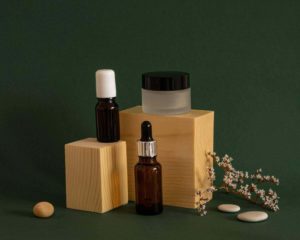One thing is for sure when it comes to skincare: the choices are endless. With a variety of products promising so many benefits, it’s easy to get overwhelmed. But before you dive into the world of serums, creams, toners, and whatnot, there’s one crucial step you shouldn’t overlook – understanding those complex skincare product labels.
Are you also one of those people who stand in the skincare aisle, squinting at the print on the back of a skincare product, feeling perplexed? You’re certainly not alone!
Skincare product labels often appear baffling with unpronounceable ingredients and uncertain promises, leaving you in a state of confusion and doubt. But fear not because we got your back. Let’s explore this guide to deciphering those cryptic labels and choosing the right products for your skin.
7 Easiest Ways to Read Complex Skincare Product Labels
1. The Purpose of the Product

First, you need to understand the purpose of the skincare product in your hand. This will help you choose the right one. Labels often provide this information through a combination of the product name, description, and intended use. Here’s what to look for:
Product type: Is it a cleanser, moisturizer, serum, or something else? Knowing this will give you a sense of how and when to use it.
Skin concerns: Labels often highlight the specific skin issues a product targets. If it aligns with your needs, it’s a good sign.
Instructions: Pay attention to any instructions on how to use the product. Some products are designed for morning use, others for nighttime, and some for both.
2. Ingredient List

Now, let’s turn the product around and take a look at the ingredient list. Think of it as the skincare product gossip column, where you get the inside scoop on all the details about the product. The ingredients are typically listed in descending order of concentration, meaning the first ingredient is present in the highest quantity.
Active Ingredients: Look for key ingredients that address your specific skincare concerns. For example, if you’re seeking a product to combat acne, keep an eye out for ingredients like salicylic acid or benzoyl peroxide.
Familiarity is your friend: Look for ingredients you recognize. Many common ingredients, like water (aqua), glycerin, and various oils, are the building blocks of many skincare products.
3. Avoid Harsh Ingredients

While reviewing the ingredient list, keep an eye out for ingredients that are known to be harsh on the skin. These can include:
Alcohol (Ethanol or Isopropyl Alcohol):
Alcohol can be overly drying and irritating to the skin.
Sulfates:
Sodium lauryl sulfate (SLS) and sodium laureth sulfate (SLES) can strip the skin of natural oils and cause dryness.
Artificial Fragrances (Parfum):
Synthetic fragrances can lead to skin irritation and allergies.
Parabens (Methylparaben, Ethylparaben, Propylparaben, Butylparaben):
These preservatives can disrupt hormone function and are best avoided.
Mineral Oil (Petroleum or Paraffin):
It can clog pores and lead to breakouts, making it unsuitable for some skin types.
Phthalates (Diethyl Phthalate, Dibutyl Phthalate):
These are often used to stabilize fragrances but can be harmful and irritating.
Formaldehyde and Formaldehyde Releasers (DMDM Hydantoin, Imidazolidinyl Urea):
They can cause skin irritation and are best left out of your skincare routine.
4. Claims and Certifications
Skincare labels often make a variety of claims. Some are related to the product’s function, while others promise specific results. While these claims should be taken with a grain of salt, here’s a breakdown of common terms:

Hypoallergenic:
This suggests that the product is less likely to cause allergies, but it doesn’t guarantee it won’t.
Non-comedogenic:
If you’re prone to acne, this label indicates that the product won’t clog your pores.
Dermatologist-Tested:
This means the product has been reviewed by dermatologists, but it doesn’t guarantee effectiveness.
Certifications:
Look for certifications like “organic,” “vegan,” or “cruelty-free” to ensure that you are engaging in sustainable practices.
5. Expiration Date
Each skincare product has an expiration date. Using products beyond this date can be ineffective or even harmful to your skin. It’s usually represented as “EXP” followed by a date.
6. Packaging

Pay attention to the packaging of the product. Airless pumps or opaque bottles are better for preserving the product’s integrity, as they prevent exposure to air and light.
7. Patch Test
When trying a new product, it’s always a good idea to perform a patch test. Apply a small amount of the product to a discreet area of your skin, like the inside of your wrist, and wait for 24-48 hours to see if any adverse reactions occur. This helps avoid potential allergic reactions or irritation on your face.
Conclusion
Reading skincare labels can be a daunting task, but it’s essential for making informed choices about the products you use on your skin. Understanding the purpose of the product, its ingredients, and the claims it makes will help you to make the best decisions for your skincare routine. Remember, it’s not about buying the most expensive products; it’s about finding the right ones that cater to your skin needs. Happy skincare hunting!
Skincare Product Labels FAQ’s-
Are there specific ingredients I should avoid in skincare products?
Yes, some common ingredients to avoid include alcohol, sulfates, parabens, artificial fragrances, mineral oil, phthalates, and formaldehyde or formaldehyde-releasing preservatives.
Is it important to consult a dermatologist before using new skincare products?
Consulting a dermatologist is advisable, especially if you have sensitive or problem-prone skin, as they can help you avoid potential issues.
What are the potential consequences of not reading and understanding skincare product labels?
Not reading labels can lead to using products with ingredients that may not suit your skin type, resulting in adverse reactions, irritation, or worsening of existing skin issues. It's crucial to make informed choices to maintain healthy skin.


Pingback: Types of Face Washes for Different Types of Skin - Wild Oak Skincare
Pingback: What is Greenwashing in Skincare & Beauty Industry- How to Avoid It?